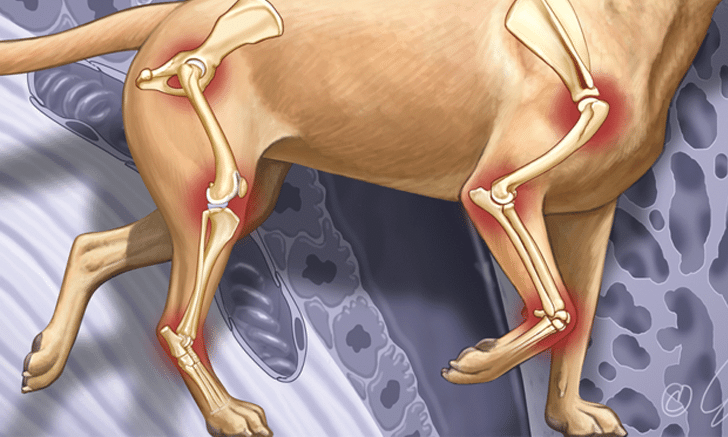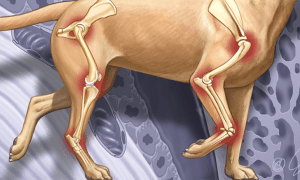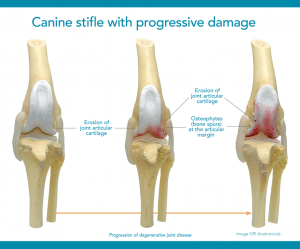
Osteoarthritis in Dogs
Osteoarthritis in Dogs
 Osteoarthritis in dogs (OA) is the disease of bones which is also memorised as theDegenerative Joint Disease of dogs. It is one of the most common diseases of dogs that mostly affect the senior and large breeds of dogs. There is no effective treatment of OA, but early diagnosis and proper management can alleviate the pain and minimize its progression.
Osteoarthritis in dogs (OA) is the disease of bones which is also memorised as theDegenerative Joint Disease of dogs. It is one of the most common diseases of dogs that mostly affect the senior and large breeds of dogs. There is no effective treatment of OA, but early diagnosis and proper management can alleviate the pain and minimize its progression.
What do you mean by Osteoarthritis?
Osteoarthritis is the degenerative and devastating disease of joints that prevails due to the deterioration of cartilage. The cartilages begin to dissolves in the elder ages, and there might be the factor of breed and disease. The cartilages act as cushions between the joints that allow them a full range of motion.
Likewise, the waning cartilages due to some diseases, injuries, and advancing age lead to losing the protective cushions among joints. This situation exhibits itself by inflicting severe pain, inflammation, and the formation of bones spurs in dogs. Moreover, it also loses the full range of motions by joints.
All the body joints are easily susceptible to osteoarthritis, while the limbs and lower spine are more prone.
What are the possible risk factors of Osteoarthritis in dogs?
The risk factors of Osteoarthritis in dogs have a close relationship with advancing age. When your furry fellow gets of years, the chances of cartilage deterioration also increase. You need to stay up-to-date with the veterinary visits to catch the signs before the situation becomes complicated.
The chances of getting Osteoarthritis in dogs are greater when they become senior, but there are some predisposing factors like;
-
Obesity
-
Large breeds (Labrador Retrievers, German Shepherds, and Golden Retrievers)
-
Excessive stress from athletic games
-
Trauma (tearing of ligaments)
-
Fractures
-
Joint infections (Lyme disease)
-
History of the elbow and hip dysplasia
-
Lack of proper nutrition
-
Conformation disparities
-
Age (middle to senior)
-
Genetics
What are the possible clinical signs of osteoarthritis in dogs?
The detection of early osteoarthritis is difficult in dogs due to their stoic nature. They tend to bear the pain and hide the disorder as far as possible from their owners until the disease becomes severe. Moreover, you need to get the maximum veterinary visits for your senior dogs for the early diagnosis.
The signs that have an association with the joint inflammations are the same as that of osteoarthritis. These include;
-
Lethargy
-
Overweighting
-
Hesitation to jump and run
-
Stiffness of joints
-
Lameness
-
Pain on patting
-
Behavioral changes like irritation
-
Difficulty in getting up
-
Change in urination and defecation posture
-
Atrophy of limb and spine muscles


